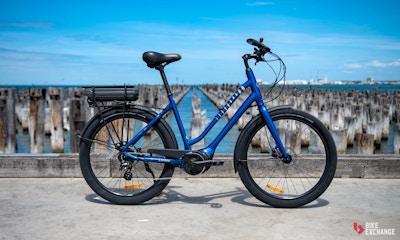After overhauling the TCR Advanced for 2016, Giant has quickly moved on to create a disc brake version for 2017. While disc-equipped race bikes are yet to be approved for use in competition, Giant is testing the water with three models and Australian tech editor Matt Wikstrom spent a few weeks riding one of them for this review.
Giant’s TCR Advanced road bike has been growing and evolving with the company for over ten years. There have been numerous revisions, the most recent of which was unveiled for 2016 and featured a slimmer frameset that saved weight and increased the stiffness-to-weight ratio. At the same time, Giant unveiled a new carbon clincher wheelset dubbed the DBL (Dynamic Balanced Lacing) WheelSystem.
Both efforts made for an impressive overhaul of the TCR Advanced, yielding a bike that was light and agile with plenty of stiffness to satisfy the racing set. Now Giant has created disc brake versions of the TCR Advanced, adding three new bikes to its road catalog.
There has been plenty of controversy surrounding disc brakes for road bikes, and while internet forums and the UCI argue and dither, many of the major bike manufacturers have been slowly introducing road disc bikes into their catalogs. Whereas most innovations take time to filter down from the ranks of professional cycling, disc brakes have been travelling in the opposite direction.
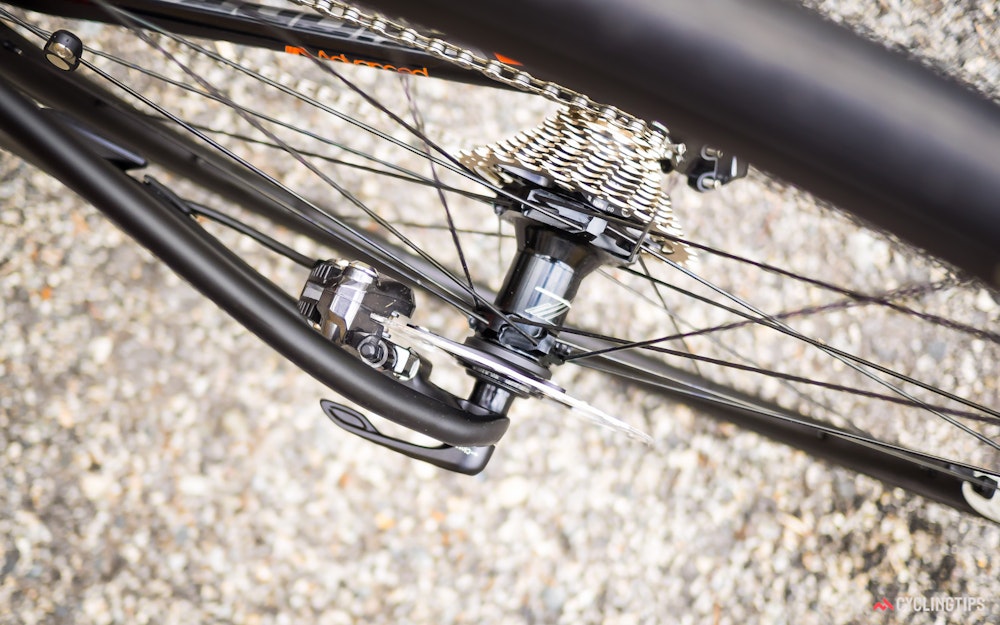
Thus, major manufacturers have been choosing to “upgrade” their endurance/gran fondo bikes with disc brakes rather than race bikes, as if there was more enthusiasm for them at the grassroots level than amongst seasoned racers.
Giant started its “trickle-up” for road disc brakes when it overhauled its Defy range of endurance-oriented road bikes for 2015. Rather than experiment with a few select models, the company opted to do away with rim brakes almost entirely for the Defy. Two years on, the only bikes that continue with rim brakes are at the low-end and high-end of Giant’s road catalog.
The new disc brake version of the TCR Advanced is offered at three levels, with one model for the TCR Advanced, one for the TCR Advanced Pro, and another for TCR Advanced SL. Pricing starts at $2,375 or the TCR Advanced Disc and rises to $8,250 for the TCR Advanced SL Disc.
For this review, I spent a few weeks riding the TCR Advanced Pro Disc that retails for $4,700 courtesy of Giant.
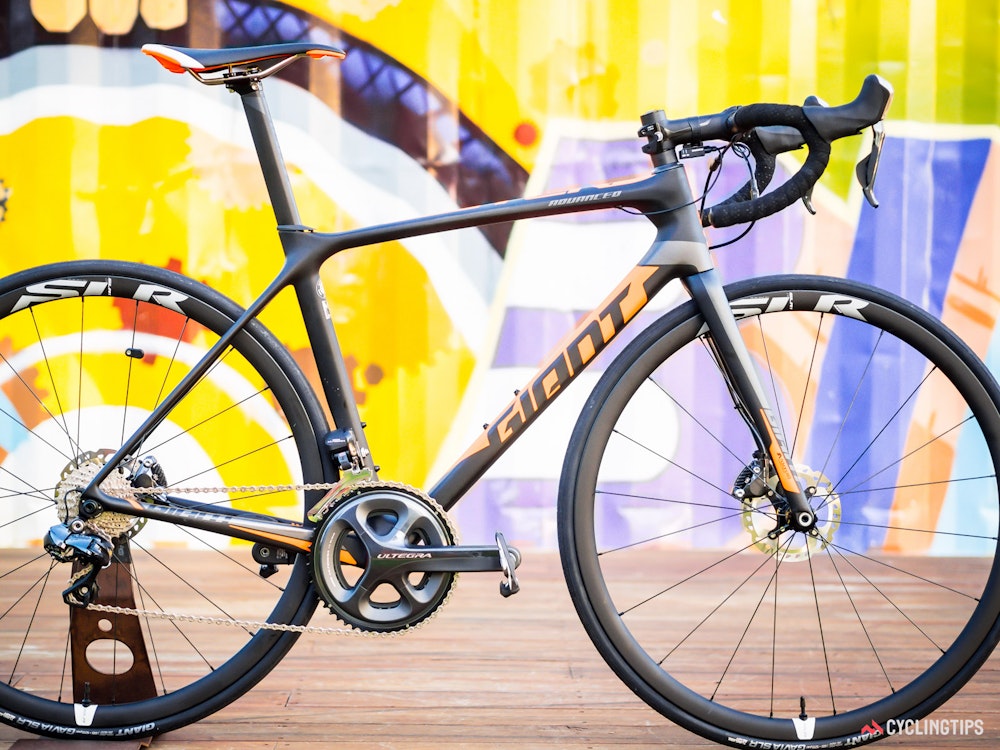
BEFORE THE RIDE
Giant’s TCR Advanced Disc frameset retains all of the features of the latest TCR Advanced Pro, including Giant’s “Advanced Grade Composite”, an OverDrive 2 head tube and 1.25 inch fork steerer, internal cable routing, integrated seatpost clamp, and a PressFit BB86 bottom bracket.
In essence the only difference is a change in the fittings for the brake calipers and wheels. Thus, center mount rim brakes and quick-release axles make way for flat-mount disc calipers and 12x100mm and 12x142mm thru-axles, front and rear. While flat-mount calipers and 12mm thru-axles have yet to be declared formal road disc standards, both appear to be gaining favor within the industry, however it’s still difficult to say that the bike is future-proof at this point in time.
Regarding the choice of axles, thru-axles are better able to contend with the forces generated by disc brakes than standard quick release axles. Any argument over the effect on wheel changes is largely futile since disc brakes already hamper the interchangeability of wheels due to the narrow tolerance of fit between the brake pads and the rotor.
The introduction of disc brakes to the TCR Advanced Pro has had no effect on the geometry of the bike so it remains reasonably aggressive, however the number of available sizes has been limited to just four, as shown in the table below:

Giant’s detailed geometry chart doesn’t provide much more information on the TCR Advanced though it’s worth noting that the bike continues with 405mm chainstays. In the past, there was concern that the wider rear hub spacing (135mm versus 130mm) associated with disc brakes really needed longer chainstays (415-430mm) to preserve the chainline and reduce the chance of heel-strike, however there’s no indication that major manufacturers are paying attention to this advice for their disc-equipped race bikes.
In this instance, the chainline on the TCR Advanced Pro Disc was satisfactory. I had no issues with “ghost-shifting” when cross-chaining the either chainring. At the same time, Shimano’s Di2 system automatically pre-empts chain-rub, so there was no unnecessary noise from the transmission. This may not apply to all frame sizes though, nor every cassette/chainring combination (since bigger cogs and chainrings are more susceptible to chainline issues).
The addition of disc brakes has had no impact on the profile of the TCR Advanced. The bike’s pleasing lines are still in effect, as is the sense of proportion, and after more than a decade, it still honours Giant’s distinctive compact frame design.
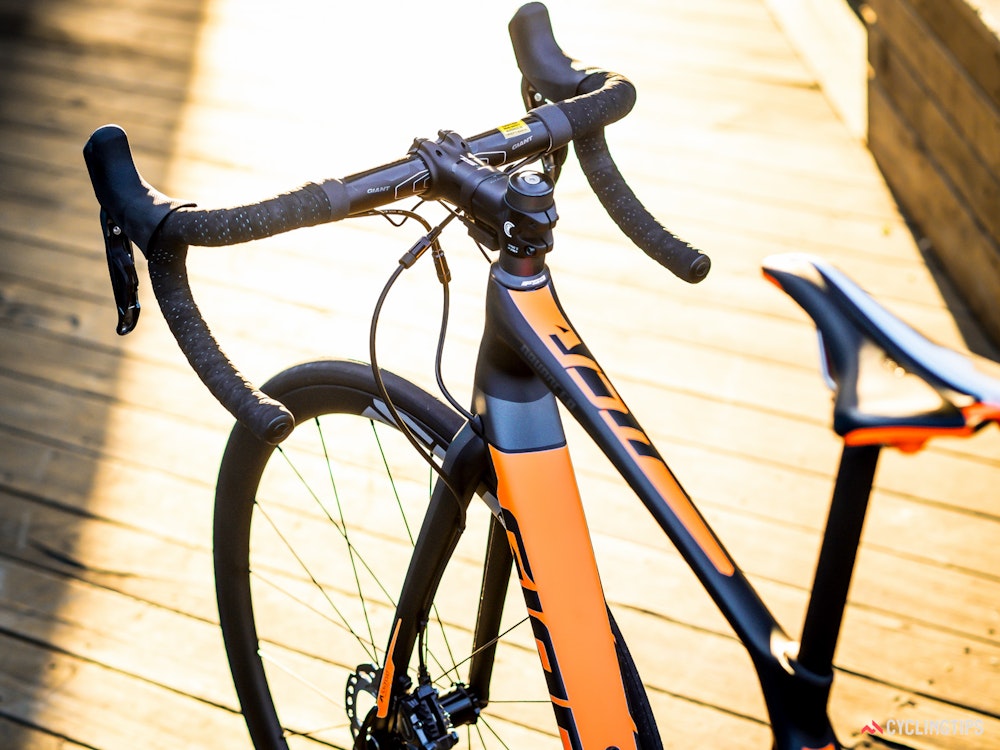
There is just one finish for the TCR Advanced Pro Disc: bright orange highlights on a nude composite frameset. The bike is equipped with Shimano’s 11-speed electronic Ultegra Di2 groupset (52/36T crankset, 11-28T cassette) with RS785 brake/shifters, flat-mount RS805 hydraulic callipers, and 140mm RT81 Ice Tech rotors. Aside from the KMC chain, Giant supplies the rest of the build with its SLR 1 Disc WheelSystem, 25mm Gavia SLR tubeless tires, and Contact SL handlebars, stem and saddle.
The SLR 1 Disc Wheelsystem makes use of a full carbon clincher rim that is 30mm tall and 23mm wide with a 17mm bed, which is essentially identical to the rim-brake version. However, this rim does not have a brake track and makes use of external nipples rather than internal nipples.
Giant supplies the bike with a full tubeless tyre setup including sealant, which must be counted as a first for a major manufacturer. The Gavia SLR tubeless tyres are new for Giant, and according to its testing, trump Schwalbe’s tubeless One on the grounds of both weight and rolling resistance. Road riders have been reluctant to embrace tubeless tyres, so it will be interesting to see if this initiative has any impact on existing attitudes.
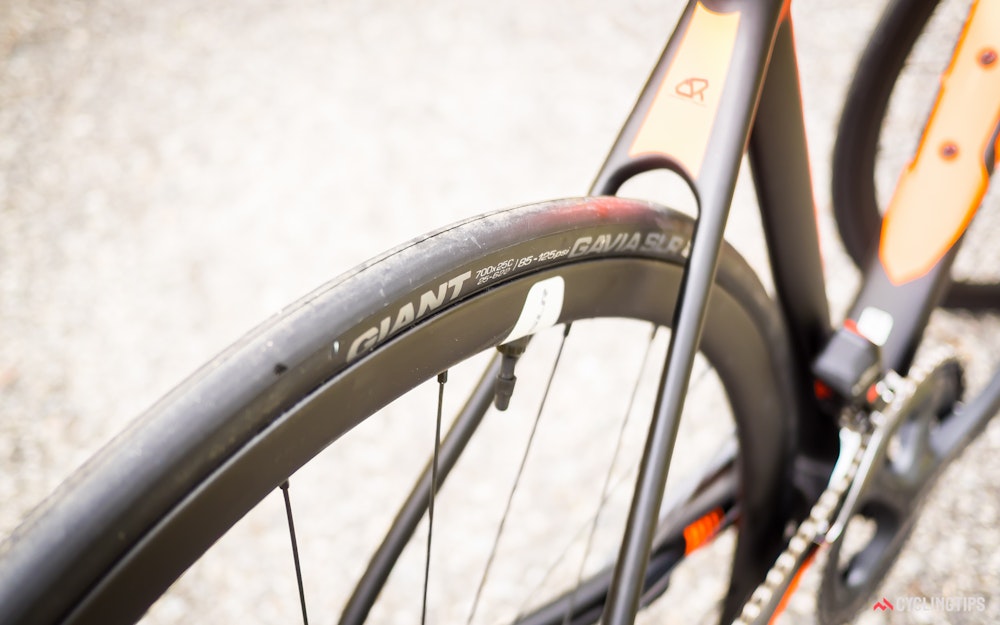
Giant’s new Gavia tires are tubeless ready so the wheels are supplied with a full tubeless setup including sealant.
The size M bike sent for review weighed 7.79kg sans pedals and bidon cages. As mentioned above, asking price is $4,700. By comparison, the rim brake version of this bike is currently selling for $5,250.
The TCR Advanced Pro Disc is supplied with a lifetime warranty for the frame, 10 years for the forks, and 1 year for the components and paint. In addition, the bike is equipped with Giant’s Ride Sense ANT+ speed and cadence sensor. For more information on TCR Advanced Disc bikes, visit Giant.
AFTER THE RIDE
Giant did a fantastic job when it overhauled the TCR Advanced last year, and while the new bike surrendered some of the comfort and smoothness that defined the previous version, it was more responsive and race-oriented, delivering a tangible improvement in performance.
Hopping aboard the TCR Advanced Pro Disc, I quickly discovered that the traits that characterized the rim brake version of the bike were in attendance and largely unaffected by the addition of disc brakes.
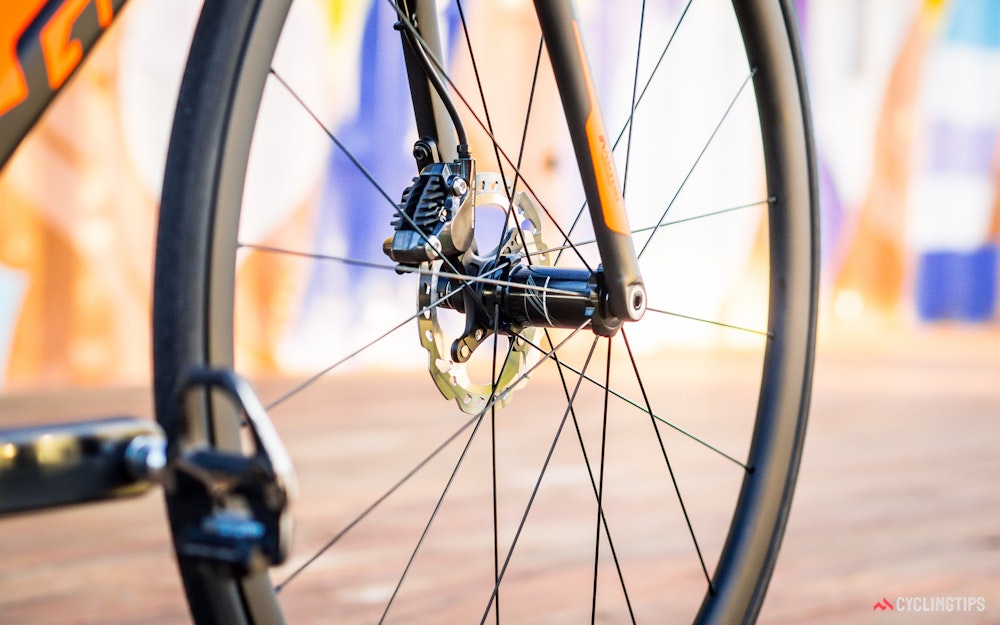
The front and rear hubs both make use of 12mm thru-axles.
The bike is still stiff, providing a firm platform for acceleration but it never felt as nimble as the rim brake version. That the Pro Disc was carrying an extra 1.26kg (the TCR Advanced Pro 0 weighed 6.53kg), probably accounts for the difference. Those with an anti-disc bias will likely blame the extra weight of the hubs and rotors, but Ultegra Di2 carries its own weight penalty that could be blamed just as easily.
The stiffness of the Pro Disc provided a distinct edge to the ride quality of the bike. I never suffered any unnecessary buzz while riding the bike on rough roads, but the sharp hits associated with potholes, road seams, gutter lips and grates sometimes bordered on harsh. In contrast, when the road was in pristine condition, the bike was smooth and quiet, and very easy to spend a lot of time on.
Giant’s tubeless Gavia SLR tyres did little to smooth out the ride. This tire has a nominal width of 25mm, however it only measured 24mm on the bike. At the same time, it was also very stiff and could not be improved by lowering the tyre pressure. I experimented with pressures as low as 30psi, at which point the tires started to sag, so I abandoned them altogether.
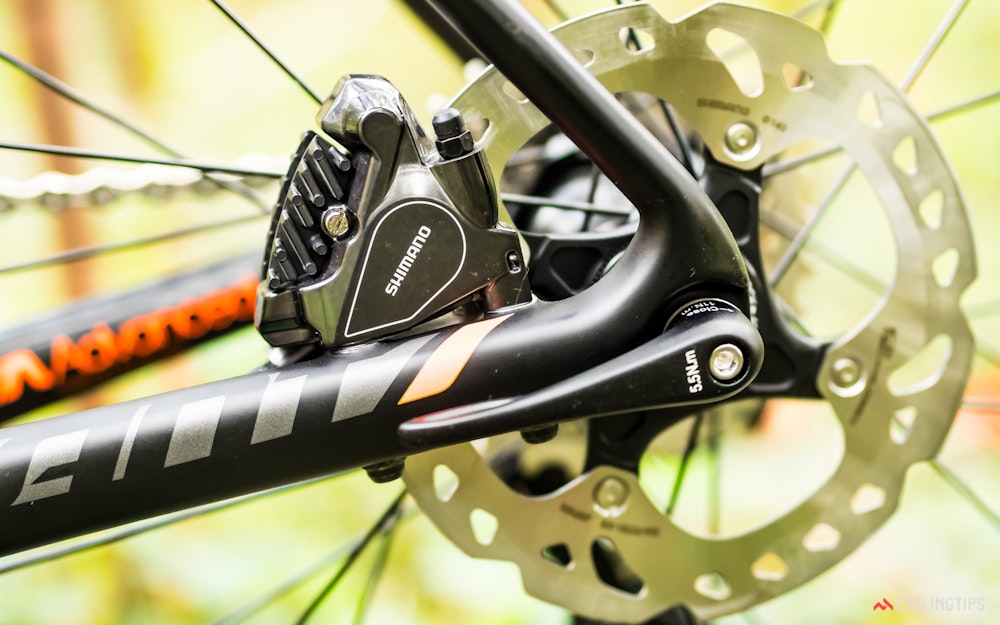
Flat-mount disc calipers are quickly becoming the standard for road disc bikes.
Swapping to 23mm Schwalbe tubeless One tires improved the ride quality of the Pro Disc significantly, and I spent the remainder of the review period riding these tires (at 60psi). Not only was this tire wider on Giant’s carbon clinchers (warning: nominal tire widths mean nothing!), it was also suppler and provided more grip.
I’ve been riding road tubeless for a few years, so I was immediately comfortable with Giant’s choice for the TCR Advanced Pro Disc, but I can see the uninitiated having problems. Giant seals its rims with a thick strip rather than thin tape; when combined with tight-fitting tires like the Gavia SLR, an air compressor is essential for inflating the tires. As a result, owners that are used to fitting their own tires may be more reliant on shop services if they choose to continue using tubeless tires on this bike.
On the flip side, owners are likely to find that they are less prone to minor punctures, and while the Gavia SLR was stiff, it was a tough tire. On one occasion, I was able to traverse a rock-strewn dirt road on these tires, and while the rear burped some air with one impact, the sidewall remained unharmed. As a consequence, I think the Gavia SLR is best characterized as a training tire.
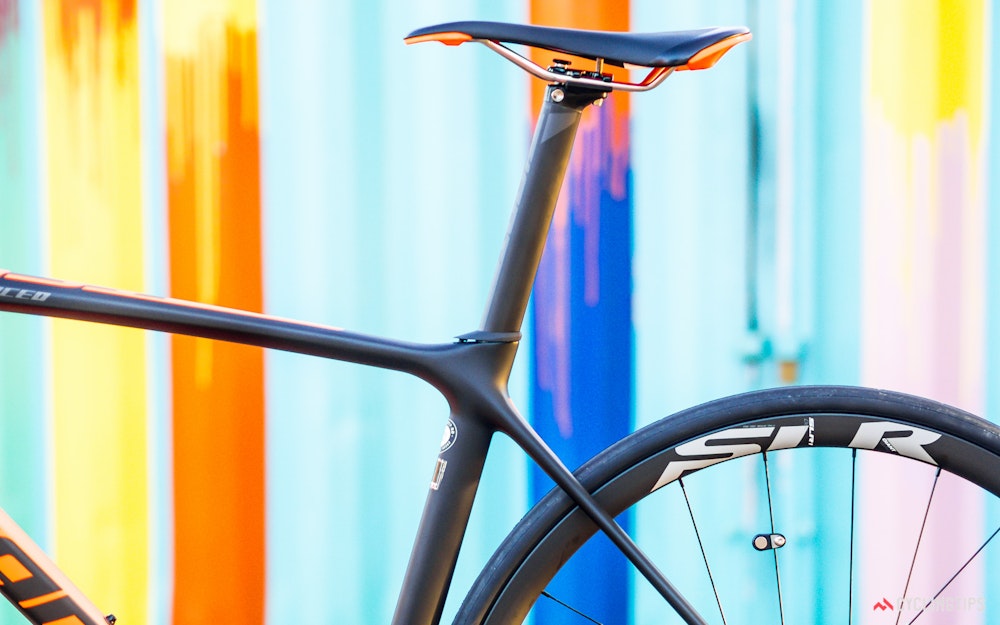
The steering and handling of the TCR Advanced Pro Disc was just like the rim brake version, stable and sure-footed under most circumstances. The bike was at its best at high speeds when very little effort was required to control the bike. In contrast, there was some over-steer at low speeds when the bike would start to feel like it could fall over, so I had to pay more attention when picking my way through tight hairpin corners.
As for the brakes, they were smooth, powerful and reliable, a perfect match for carbon rims. Shimano’s RS785 hydraulic brake levers are starting to show their age though. As the company’s first hydraulic road brake lever, it has been in use for a few years, but more recent designs (such as the RS685 lever for mechanical groupsets) have been improved with less lever throw and more modulation. And like every other disc brake, once wet, the brakes start to squeal.
Shimano’s Ultegra Di2 groupset was precise and reliable, as always. The rest of the bike was trouble-free to except for the seatpost clamp, which was reluctant to release the seatpost. I found that I needed to give the bolt a decent tap to knock the wedge free (just like a quill stem, for those that remember using them). This was easily done in the workshop, but it slowed down minor adjustments out on the road.
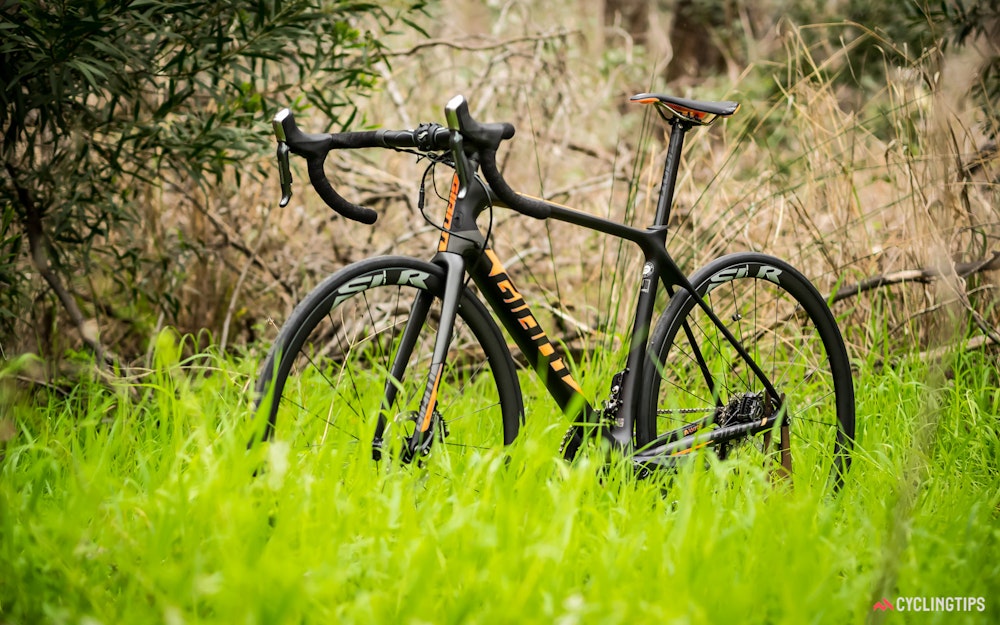
SUMMARY AND FINAL THOUGHTS
It has been a few years since disc brakes first started appearing on road bikes so I think its fair to say that the novelty of the system is starting to wear off. At the same time, a consensus on the format for caliper mounting, rotor size and hub axles is slowly emerging, providing consumers with a measure of confidence that the road disc bikes they buy today won’t be rendered obsolete by the next wave of development. In this regard, Giant’s TCR Advanced Pro Disc appears somewhat future-proof, at least to the extent that any emerging “standard” in the bike industry is.
The pressing question for any racer considering disc brakes (aside from their legality, that is) is the impact on the performance of the bike. When compared to the TCR Advanced Pro with rim brakes that I reviewed last year, the TCR Advanced Pro Disc was blunted somewhat in terms of its agility and responsiveness. That the new bike was heavier might account for the difference, in which case the TCR Advanced SL Disc will be a better choice for racers that aren’t bound by a tight budget.
Unfortunately, it seems unlikely that racers will be flocking to buy a disc-equipped race bike when local clubs and national bodies aren’t prepared to approve their use in competition. Meanwhile, the UCI is only inching forward on the matter with another trial announced for 2017, so at least another year will pass before a bike like the TCR Advanced Pro Disc is race-legal.
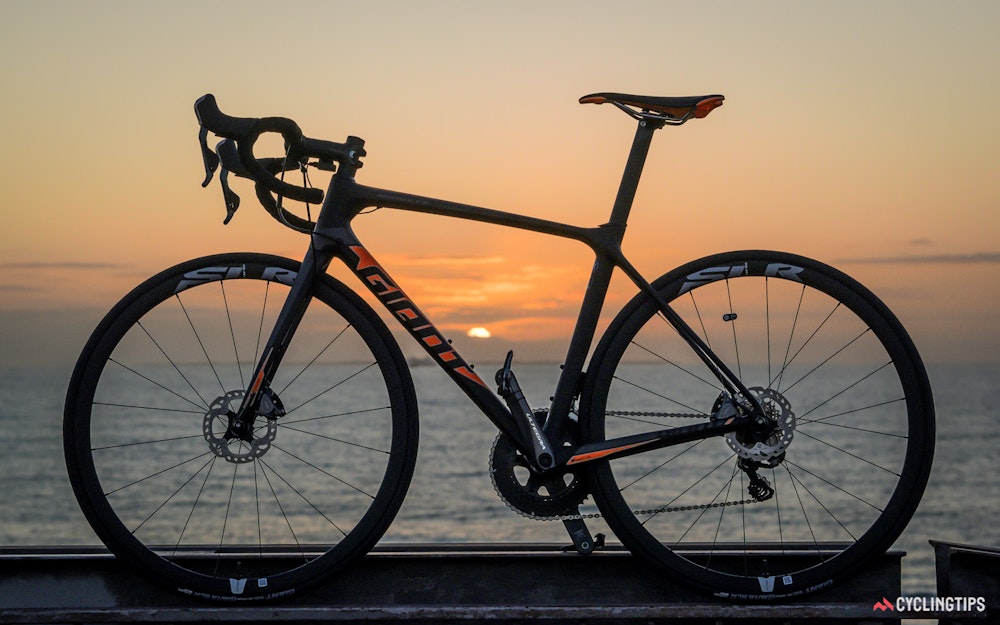
WRAP-UP
YOU CAN’T STOP PROGRESS
After overhauling the TCR Advanced to make it lighter and stiffer for 2016, Giant has created a disc brake version for 2017. The result is a largely seamless conversion to disc brakes, though the extra weight associated with the new braking system and Shimano’s Ultegra Di2 groupset blunts the performance of this model, but only by a bit. With a new tubeless road tire in its catalog, Giant supplies the wheels with a full tubeless setup, and while the tires promise to be hard wearing, they’re too stiff and uncomfortable. Weight, size M, 7.79kg sans pedals and cages. Price, $4,700
GOOD STUFF
Smooth and easy to ride Sharp handling Brings carbon rims and tubeless tires into the mainstream Good value for money
BAD STUFF
Gives up some responsiveness and agility compared to rim brake version Gavia SLR tires too stiff and narrow Some buyers may hesitate at tubeless tires
Follow BikeExchange: Email | Facebook | Twitter | Instagram | YouTube | STRAVA



